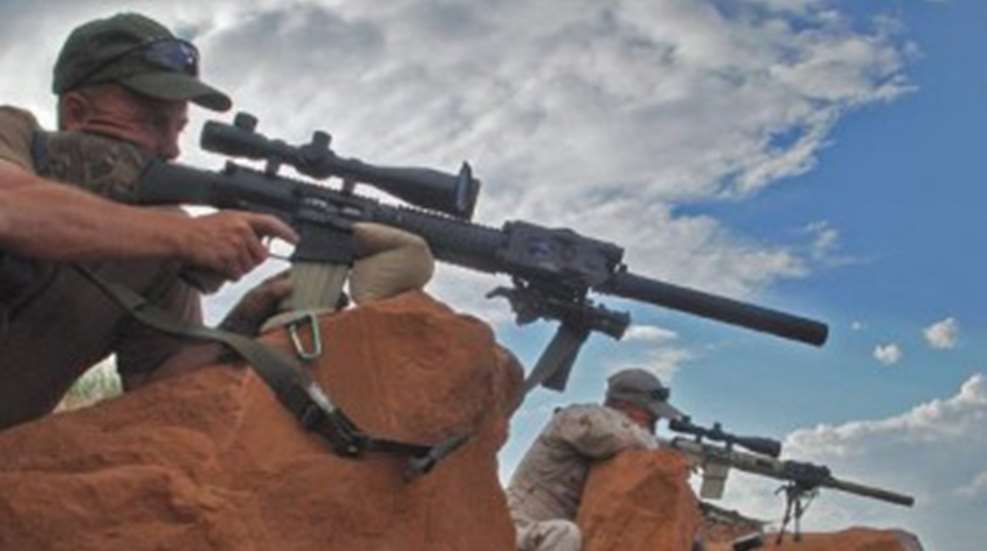
Whenever I shoulder a rifle for work or play, I'm reminded of things on which I need to spend more training time.
Shooting with field rests is a prominent example. This skill transcends game pursuits and applies across all practical rifle-shooting genres. It also has a strong tactical application, which is where I first learned that flat-bellied range shooting is poor preparation for real-world environments. While I've practiced unsteady shots for many years, I'll admit I take the easy road when checking zeros or developing elevation data on the range. Once we adjust and verify our zeroes and distance data, however, it's time to progress to more realistic training.
I place field rests in three main categories: attached, unattached and natural. Attached rests generally consist of slings, magazines, monopods, bipods and even tripods. These are relatively familiar and too voluminous to adequately cover here so I'll stick to unattached and natural rests, which are plentiful in the field.
Purpose-built products and commonly carried gear both fit into the unattached category. A rolled jacket, day-pack, stowable rest and shooting sticks are examples. When placing your rifle over an unattached rest, the farther out it lies under the fore-end, the better the vertical stabilization. You sacrifice some lateral range as the rest moves away from you, so a happy medium is usually found between 1⁄3 and 2⁄3 the distance from the receiver to the tip of the fore-end or handguard. Soft or pliable rests can be exceptionally stable, and they dampen any bounce from recoil. It's important to ensure the material—which tends to settle in after a few shots and wrap around the fore-end—doesn't touch the barrel anywhere. This will prevent a shift in the point of impact (POI) from zero due to irregular barrel contact. It should go without saying that you need to ensure no portion of a soft rest gets in front of the muzzle, but I have a daypack with a hole through one pocket that proves it's worth mentioning.
The new X-Rest by Montie Design is a good example of a stowable rest. The X-Rest is quick to assemble, lightweight and durable. It's great for positions in which you plan to remain, but is easy to stow and carry when moving. I've been using one for the past four months and find it very useful. Other than static observation positions, I don't see much tactical application for the X-Rest, but it's a great addition to hunting and range bags.
Shooting sticks have been bracing long-barreled arms ever since someone figured out muzzleloaders could be aimed instead of pointed. Commercial designs are light, compact and available in several lengths. While these also favor static positions, they're fast enough to deploy and stow for tactical applications in places where a conventional bipod is too short, like on rooftops or in tall vegetation. I've found I can use my support hand to pull the sticks and rifle into one solid unit for fairly steady support. Expedient shooting sticks can be made from two straight branches approximately 36 inches long with some cord binding them into an "X." A nice addition to any stick set is a 30-inch length of cord or bungee tied between the legs near the bottom, preventing them from kicking out too wide when used on hard surfaces.
Mother Nature provides several rests we can lean on for shot support when other options aren't available. Trees, fallen logs, stumps, horizontal branches and large rocks can all be pressed into service. Whenever possible, place something soft between the fore-end and a firm rest to dampen recoil vibrations. A glove, scarf or your support hand all work well.
Never rest your barrel directly on anything if accuracy is important. Ensure your muzzle is clear of the rest, particularly when shooting downhill over any type of ledge. While firing a round into something a few inches in front of the muzzle sounds ridiculous, it happens. When positioned low and shooting downward, the optical line-of-sight's placement above the line-of-bore often allows you to see over an obstacle or ledge while the muzzle can't. The result can be embarrassing, dangerous and tactically compromising, so it pays to double check line-of-bore clearance.
To use a standing tree trunk for a rest, place the support hand on the tree with the thumb extended outward, leaning into the tree with the fore-end placed on the thumb for support. I use this technique often and observed a fellow shooter practicing it the other day in preparation for our local whitetail season. While not perfect, this hasty rest beats offhand shooting by a mile.
Lastly—and this applies to all rests—if the barrel isn't free-floated, the rest should always be placed under the same portion of fore-end to reduce POI shifts due to differing pressures transmitted through the handguard to the barrel. It seems like a little thing, but it can make a big difference downrange.
Take a few of your normal field shooting odds and ends to the range when preparing for your next adventure. Try shooting from different positions with several expedient rests and ensure you know the limits of your skills and equipment before sending rounds downrange for serious pursuits.





































